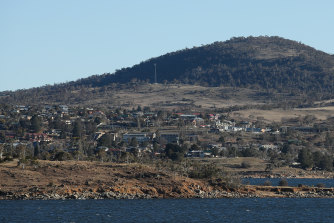House prices in pockets of regional NSW are rising at a faster rate than in Sydney, as ongoing demand from sea and tree changers pushes prices to record heights.
Prices across a string of local government areas have jumped by more than a third year-on-year, new Domain figures for the December quarter reveal.
The Snowy Monaro Regional Council area recorded the largest gain, with the median house price climbing 50.8 per cent to $585,000.
It was closely followed by the Kiama and Byron local government areas, where house prices rose about 48 per cent, to respective medians of $1.495 million and $1.7 million. The Byron area’s median was up $550,000, the largest price hike in dollar terms and topping Sydney’s record $1.6 million median – up 33.1 per cent last year.
Kiama’s neighbouring council area of Wingecarribee, which takes in Bowral, was also among the strongest performing markets, with the median up 37.2 per cent to $1.18 million. As were the Ballina, Tweed and Lismore regions, which all saw prices rise at least 32 per cent over the year, as the rapid price gains seen in Byron rippled out across the state’s north east.
Domain’s chief of research and economics Nicola Powell said regional NSW price rises had picked up momentum last quarter, with house prices up 12.5 per cent to $720,000 – taking annual growth to 27.5 per cent. It marked regional NSW’s strongest quarterly price rise on Domain records and was also more than double the growth seen in the previous three months.
An increase in sea and tree changers looking to leave city living behind during the pandemic, and the rise in remote working, had been driving strong demand and price growth in regional markets, Dr Powell said. As had an increase in cashed-up buyers looking to purchase holiday homes, while international travel remained off the table.
A post-lockdown spike in market activity was likely key to the record growth seen over the past quarter, Dr Powell added.
Tree and sea changers, who had been renting in regional areas, may also have opted to buy as time passed and they committed to a permanent relocation.
Increased demand has seen houses in the Snowy Monaro Regional Council area – including towns such as Jindabyne, Thredbo, Berridale and Cooma – jump $197,000 year-on-year to a median of $585,000 recorded over the six months to December. Prices there have now more than doubled over the past five years.
First National Real Estate Kosciuszko principal Gordon Jenkinson said an influx of tree changers and holiday home buyers from Sydney and Canberra had been the key driver of rapid growth. However, Snowy 2.0 and a shortage of new homes and land in Jindabyne, as developers await a new master plan for the Snowy Mountains precinct, were also playing a role.

The median house price in the Snowy Monaro Regional Council area lifted almost $200,000.CREDIT:ALEX ELLINGHAUSEN
“COVID-19 has been a huge influence … we’re getting heaps of the younger demographic, especially guys into outdoor activities, who can now work remotely,” he said.
Mr Jenkinson said land had been selling for outrageous amounts, noting two vacant blocks in Jindabyne recently sold for more than $650,000 and had traded for between $220,000-$240,000 about two years ago. A waterfront block in East Jindabyne that traded for $650,000 18 months ago had resold for $1.455 million. High-end homes were now selling for more than $3 million.
After such rapid growth he felt the market had probably reached its peak and feared locals would continue to be priced out of Jindabyne unless the new masterplan for the region prevented short-term holiday rentals in some areas.
On the south coast, Raine & Horne Kiama director Steve Pryor said the market had been through a crazy two years, with strong price growth – the median is up $485,000 year-on-year – also driven by increased demand from Sydneysiders.
About 50 per of the property sold by his team last year were secondary homes for Sydney buyers, he said. The bulk of purchasers were retired, or semi-retired, but there were also some younger buyers taking advantage of remote working.
However, there had been a shift in the market late last year, as seen in Sydney, Mr Pryor said. Affordability constraints were taking their toll, forcing a growing number of locals out of the market and house hunters were in less of a frenzy to purchase.
Demand was still outweighing supply though, he said. While an influx of listings had been expected, the ongoing surge in coronavirus cases had prompted some sellers – mostly older homeowners reluctant to have people in their homes amid the outbreak – to delay selling.
Dr Powell said the shift seen in the Sydney property market was likely to spread throughout the state in time, as price changes tend to ripple out from the harbour city.
Source: Domain